According to data from the ZDC Research Center, as of December 2011, the Zhongguancun online product library included 1,341 mobile power products, of which Energizer and Pinsheng ranked the top two in terms of attention, which were 48.2% and 15.4% respectively.
Huaqiang North Electronics Market: Car chargers, mobile power supplies, etc. All kinds of products designed for Apple have become the new darling of dealers, the price is concentrated in the range of 100-600 yuan, in addition to MILI, MEEPOWER these Apple officially recognized products, many have not Authorized products are still favored by consumers. The gross profit margin of manufacturing mobile power is close to 50%, much higher than the manufacturing of mobile phones. 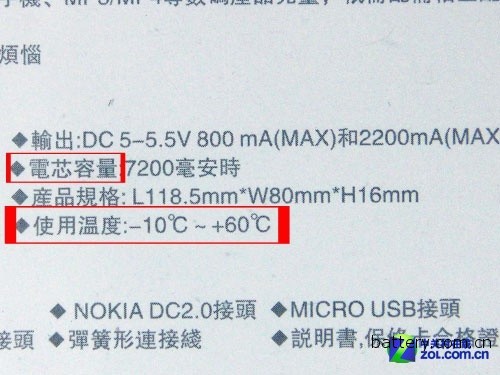
According to a data provided by the China Computer News: Taking the Chengdu market as an example, the mobile power supply is sold in the Chengdu market with an annual sales of 9000-10000 sets and annual sales of about 4 million yuan. The country has an annual sales of 800,000 sets and sales of 330 million.

Chengdu market mobile power sales
· Mobile power standard is missing, companies need to be self-disciplined
Mobile power, the digital product that has been born in recent years, is favored by many people because it can provide longer battery life for various mobile phones, MP3s and even notebooks. In addition, the popularity of products such as the iPhone, which cannot be replaced by the user, has become one of the important factors for the rapid development of mobile power. However, since the batteries used in most mobile power sources are lithium-ion batteries with very active chemical properties, they also cause some people to question when they are convenient to move power. Sound: Is mobile power really safe?
While people are still worried about some of the safety problems caused by lithium batteries, in the domestic market, mobile power, which has no clear norms and standards, is quietly expanding its market, many small brands and even cottage workshops. The goal of making money has been transferred to the emerging field of mobile power, and products with different quality are present in the market.
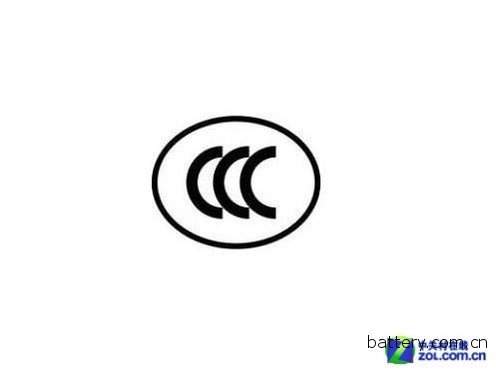
Where is the “3C†certification path for mobile power?
For the most basic safety certification of various products, I believe many people will think of the most common 3C certification in our daily life. The 3C mark is not a quality mark, but a basic safety certification. Some of its indicators represent the safety and quality of the product.
A ready-made circuit board plus a lithium battery and a shell, put on their own LOGO, get a package and go on sale. Driven by huge interests, some small workshops have also been added to the current hot market, which directly leads to the current mixed market of mobile power, and the quality of products is uneven. It is buried for consumers' charged equipment and even personal safety. There is no small security risk.
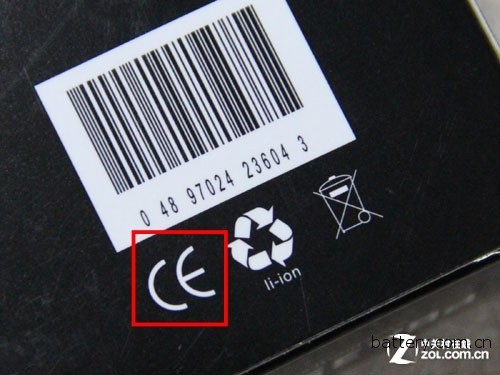
"CE" certification mark on some mobile power packaging
In addition to the security performance, the capacity of the virtual standard is believed to be a lot of consumer anger but helpless, want to detect whether the capacity of the battery or mobile power supply can only be tested by the corresponding professional testing equipment, so for the average consumer In terms of whether the mobile power supply is virtual or not, it depends to a large extent whether the manufacturer is "sufficient". That's one of the reasons why many consumers would rather spend more money on big-brand products.
In the previous article "Who is best equipped with iPhone4S 8 hot-selling mobile power Hengping", we conducted three voting surveys on various parameters and evaluation criteria of mobile power at the end of the article. Obviously, the survey results, consumers see capacity as the most concerned part, which also reflects the consumer's current misunderstanding of this new industry. 
Mobile power parameters that consumers care most when purchasing
â–¶ Several parameters that consumers care most when purchasing mobile power:
• Capacity • Portability • Brand • 5V/2.1A high current output
In the first vote, we can see that for today's consumers, when they buy mobile power, the most important parameters are capacity, portability, brand and whether they can charge high-current devices such as iPad. 5V/2.1A output.
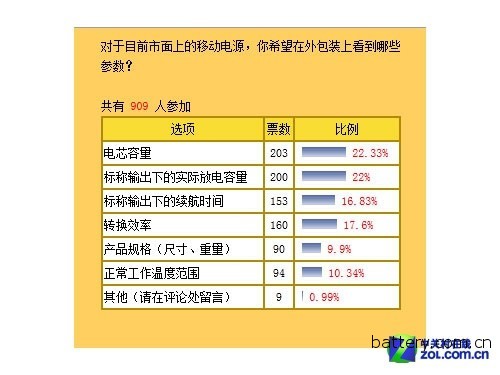
Mobile power parameters that consumers most want to see
â–¶ Consumers most want the parameters marked by the manufacturer on the outer packaging:
• Cell capacity • Nominal actual discharge capacity • Nominal actual battery life • Conversion efficiency
In the second consumer, what parameters are most likely to be seen on the product packaging are the battery capacity, the actual discharge capacity at the nominal output, and the actual endurance and conversion efficiency at the nominal output. It is the parameter that consumers most want to see on the outer packaging.

Evaluation parameter survey
â–¶ Consumers most want the data that they would like to see in the future ZOL mobile power evaluation:
• Actual cell capacity • Conversion efficiency • Discharge time • Discharge capacity test
• Charge and discharge temperature test
Because in the current mobile power industry, almost all manufacturers only indicate the cell capacity inside the mobile power supply and the voltage parameters of each output input interface, so in order to give more consumers a clearer reference, currently we ZOL The mobile power channel can only be used to show the parameters that consumers most want to see through a detailed test. Therefore, in the third voting survey, we will initially customize our own evaluation criteria based on the current mobile power testing program that consumers are most concerned about. That is the core content of this article.
Industry needs to be regulated, and it is more responsible for consumers. This is also the media responsibility of Zhongguancun Online.
Before we understand the ZOL mobile power evaluation standards and specifications, we need to explain the various parameters of the mobile power supply in detail. Which parameters should be paid attention to by our consumers when purchasing mobile power?
ZOL considers the following parameter values ​​to be of concern:
â–¶ Capacity:
• Unless otherwise stated, the capacity of the mobile power supply generally refers to the capacity value indicated by the manufacturer on the outer packaging of the product, in milliampere-hours (mAh). Generally speaking, it refers to the capacity value of the internal battery of the mobile power source, rather than the actual usable capacity value that many consumers think, which also reminds consumers.
â–¶ nominal parameters: 
Nominal parameter
• The nominal parameter refers to the charging and discharging parameters indicated by the manufacturer on the outer packaging. For example, a mobile power supply with the output interface parameter of 5V/1A on the nameplate, the nominal parameter mentioned in the test process is at 5V. Performed under /1A conditions. Of course, we must also consider whether the test battery can reach the nominal value. This is also an important aspect that we think that a mobile power supply performance is excellent.
â–¶ Actual battery capacity:
• The actual battery capacity is the capacity value obtained after the internal capacity of the mobile power supply is tested separately, that is, the actual capacity of the battery. This is different from the nominal "capacity" of the front outer package.
â–¶ Actual discharge voltage:
• Actual discharge voltage refers to the actual output voltage value of each output interface of most mobile power supplies at the time of use. Since the line resistance of the connecting wires and plugs will reduce the actual output voltage of the mobile power supply, in the course of our test, the normal output voltage of most mobile power supplies is generally around 4.5V-5.2V, which is for reference only.
â–¶ Actual output capacity :
• Use the discharge parameters indicated on the product nameplate for the actual output capacity after the uninterrupted discharge test, which is the actual output capacity of the 5V (or higher) output interface of the mobile power supply. This is an important indicator of the performance of a mobile power source itself.
â–¶ Actual life time :
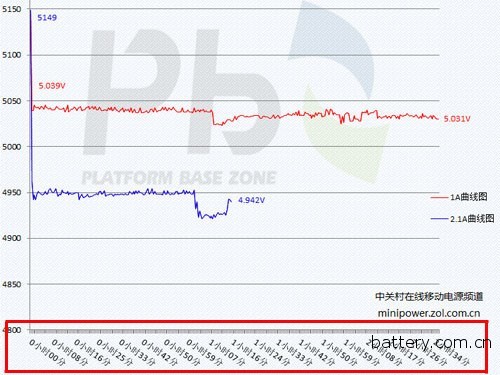
Life time test
• The duration of the uninterrupted continuous discharge using the nominal discharge parameter, which is the total time from when the mobile power supply is fully charged to when it stops outputting.
â–¶ Actual conversion efficiency:
• The conversion efficiency of mobile power is also the conversion efficiency of its internal circuit board. The mobile power with high conversion efficiency can provide users with longer battery life. The calculation method is (actual discharge capacity × average discharge voltage) / (actual cell capacity × cell voltage) = conversion efficiency. For example, a mobile power supply with a nominal battery capacity of 2000 mAh, firstly obtained two values ​​of the actual discharge capacity of 1000 mAh and the average discharge voltage of 5.1 V, and is a single cell, the calculation of the conversion efficiency is as follows:
(1000mAh × 5100mV) / (2000mAh × 3700mV) = 0.68 = 68%
• In order to make the conversion efficiency of the mobile power supply not affected by the excess capacity of the internal battery, it is necessary to calculate the actual conversion efficiency, and calculate the conversion efficiency based on the measured capacitance value of the actual battery capacity. Conversion efficiency value.
ZOL believes that as an important indicator to measure a mobile power performance parameter, the larger the value, the better.
â–¶ Average output voltage:
• Under the nominal parameters, the average of all actual output voltages recorded at regular intervals using constant current discharge.
â–¶ Voltage fluctuation range:
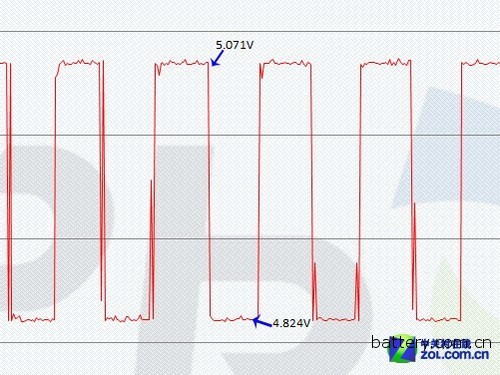
The difference between the highest voltage and the lowest voltage during the entire discharge process
• The difference between the highest voltage and the lowest voltage that is output during the entire nominal discharge.
â–¶ Lithium polymer battery:
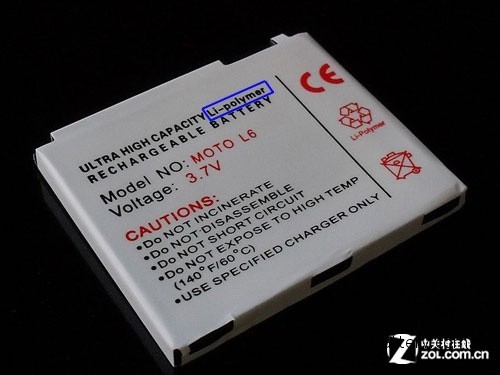
lithium polymer battery
• The improved battery type of lithium-ion batteries using liquid electrolytes has higher capacity, safer, and arbitrarily shaped (such as ultra-thin) characteristics than lithium-ion batteries in the same volume.
After having a certain understanding of the current parameters of the mobile power supply, we can find that, in fact, for the simple construction of the mobile power supply, only the performance parameters are actually very numerous. It is not as simple as the capacity, input and output parameters marked by many manufacturers. So in the future, all the test content in our ZOL mobile power evaluation is tested around the parameters listed above. To provide consumers with the most realistic test data for each mobile power supply.
In fact, we have said so much. Our only purpose is to help consumers sort out some misunderstandings about mobile power purchases. It is also hoped that the current mobile power market will be more standard and more standard. Consumers who come to mobile power provide more intuitive and comprehensive evaluation data as a reference.
The following are ZOL mobile power evaluation standards and specifications (2012 version), I hope to come out with the industry and all readers to discuss:
â–¶ Actual output voltage detection 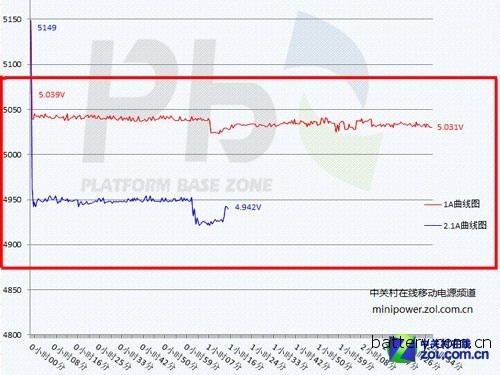
Actual discharge voltage detection
Detecting the actual output voltage of the mobile power supply during the entire discharge time using the nominal current. For example, the current charging voltage of most mobile phones and digital devices is 5V. The purpose of this test is to detect the actual voltage of the 5V output of the mobile power supply. Whether the value can be equal to or close to the input parameters of the device being charged. The actual output voltage of the mobile power supply is as close as 5V.
â–¶ actual battery capacity test
| Nominal capacity | Measured capacity | |
| Numerical value | 3000mAh | 3121mAh |
Separating the cells inside each mobile power supply from the circuit board, that is, using a test instrument to separately charge and discharge the cells inside each mobile power supply. The discharge current is 0.2C of the total capacity, for example, the capacity is 5000mAh. The discharge current used by the mobile power source for the cell capacity test is 5000 mAh x 0.2 C = 1000 mA, which is the discharge current value of 1 A.
â–¶ Nominal output capacity detection
    Also called the actual output capacity, the capacity test is performed on each output interface under the nominal parameters. The unit has the same capacity as the lithium battery and is mAh (mAh). However, the nominal output capacity is usually the output capacity of the mobile power output interface (5V or higher). Due to the conversion problem between 3.7V (or higher) and 5V output, the actual output capacity is lower than the nominal capacity. . The purpose of this test is to provide consumers with the capacity values ​​that the 5V (or higher) interface can actually use.
â–¶ Average discharge voltage test
    Under the nominal parameters, the average of all actual output voltages recorded at regular intervals using constant current discharge. For example, if a total of 400 records are obtained using the test instrument, then the total output voltage of the 400 records is divided by 400, and the average output voltage is obtained. The closer the average output voltage value is to 5V, the better.
â–¶ actual conversion efficiency test
    The conversion efficiency test was carried out using the actual cell capacity and output capacity as well as the average voltage, which was 80% acceptable. The calculation method of the conversion efficiency of the mobile power source is: (actual discharge capacity × average discharge voltage) / (cell capacity × 3700 mV) = conversion efficiency. The actual discharge capacity is the output capacity of each output interface of the mobile power source, and the average discharge voltage is the average discharge voltage value of all the recorded points. The battery capacity is the actual capacity value after the individual capacity test of the battery core is performed by the instrument.
â–¶ Nominal discharge voltage curve test
The output voltage curve recorded at regular intervals (usually 30 seconds) during the entire discharge process under nominal parameters is as smooth as possible (average discharge voltage test and voltage fluctuation range test are required). To detect the stability of the mobile power supply to provide uninterrupted voltage out of the nominal value.
â–¶ Charging calorific value test
The difference between the maximum temperature of the outer casing (average of the positive and negative sides) and the ambient temperature after 1 hour of actual discharge using the nominal parameters, the smaller the value, the better.
â–¶ Discharge calorific value test
    The difference between the maximum temperature of the outer casing (average of the positive and negative sides) and the ambient temperature after 1 hour of actual charging using the nominal input parameters, the smaller the value, the better.
| Test items | Testing purposes | standard test |
| Output voltage detection | Is the minimum discharge voltage sufficient? | Approximately equal to 5 V (USB output interface) |
| Cell capacity test | Check whether the capacity is false | ≥ nominal value |
| Output capacity test | User can use capacity | The higher the better |
| Average discharge voltage | Used to calculate conversion efficiency | The higher the better |
| Actual conversion efficiency | Board performance testing | The higher the better |
| Discharge curve test | Detecting output voltage fluctuation range | The smaller the fluctuation, the better |
| Discharge calorific value test | Temperature at discharge | The smaller the value, the better |
| Charging calorific value test | Temperature during charging | The smaller the value, the better |
For a mobile power supply, the excellent output capability is largely related to the chassis parameters listed in the above table. We believe that a high-performance mobile power supply should have an output voltage as close as possible to the standard USB interface's 5V voltage, with high conversion efficiency, as small a voltage fluctuation range as possible, and low charge and discharge. temperature. Only mobile power with this kind of performance can provide stable and efficient power protection for the devices that users need to be charged.
In the outer packaging of most mobile power products, it is difficult for consumers to intuitively understand the various parameters of the product. However, it is gratifying to note that many manufacturers have begun to gradually mark other parameters on the product packaging, so that consumers' awareness of the product has increased significantly. 
Charging time labeling

Use temperature labeling
In addition to the capacity and input and output parameters of the mobile power supply, some manufacturers in the above figures have added other parameters such as charging time and operating temperature. For consumers, they can have a faster and more comprehensive product for this product. Deep understanding, which affects their use habits in daily use, such as in the summer high temperature environment or in the cold environment, affecting the performance of the product itself.
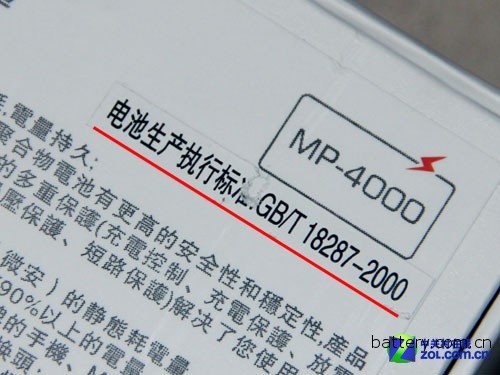
There are only battery production execution standards
In addition, some manufacturers will indicate the production standards for internal batteries on the outer packaging of the product. Although there is no clear standard and specification for the mobile power industry for the current lack of standard mobile power industry, the internal use of lithium batteries as the power storage unit can also be followed in the production specifications of the battery. Relevant standards introduced. This approach is also very worthwhile for other manufacturers to learn from.
For those products that use virtual standards and whose performance parameters do not meet our ZOL mobile power evaluation standards and specifications, I will spare no effort to attack them. With the principle of presenting the most realistic data parameters of all test products to consumers, we also I hope that all mobile power manufacturers will do things steadily, and hope that the country will introduce relevant mobile power production specifications and parameter standards as soon as possible, so that we can jointly promote the steady development of the mobile power market in the direction of standardization.
ZOL mobile power channel view:
Behind the fast-growing emerging industry of mobile power, we are currently unable to accurately estimate how many products in the huge market are not up to standard and have potential safety hazards. For the vast number of consumers, the emergence of mobile power supply provides us with great convenience. At the same time, should relevant domestic departments also introduce relevant standards as soon as possible to regulate this industry that lacks industry norms? Before that, we can only use our own customized, but not very complete set of standards to inform consumers about the various parameters hidden inside each mobile power supply. As a lack of standards and emerging industries, we still need the vast number of consumers, manufacturers and the media to work together to make this industry more stable and healthy.
Ophir Optics lenses for LWIR FPA's are available in focal lengths ranging from 4.0mm to 342mm including zoom lenses, multiple field of view, fixed focal length lenses, manual focus lenses, and motorized focus lenses
LWIR series is a range of long-wave infrared lenses specifically designed to operate in the 8-14 μm wavelenght region with uncooled detectors
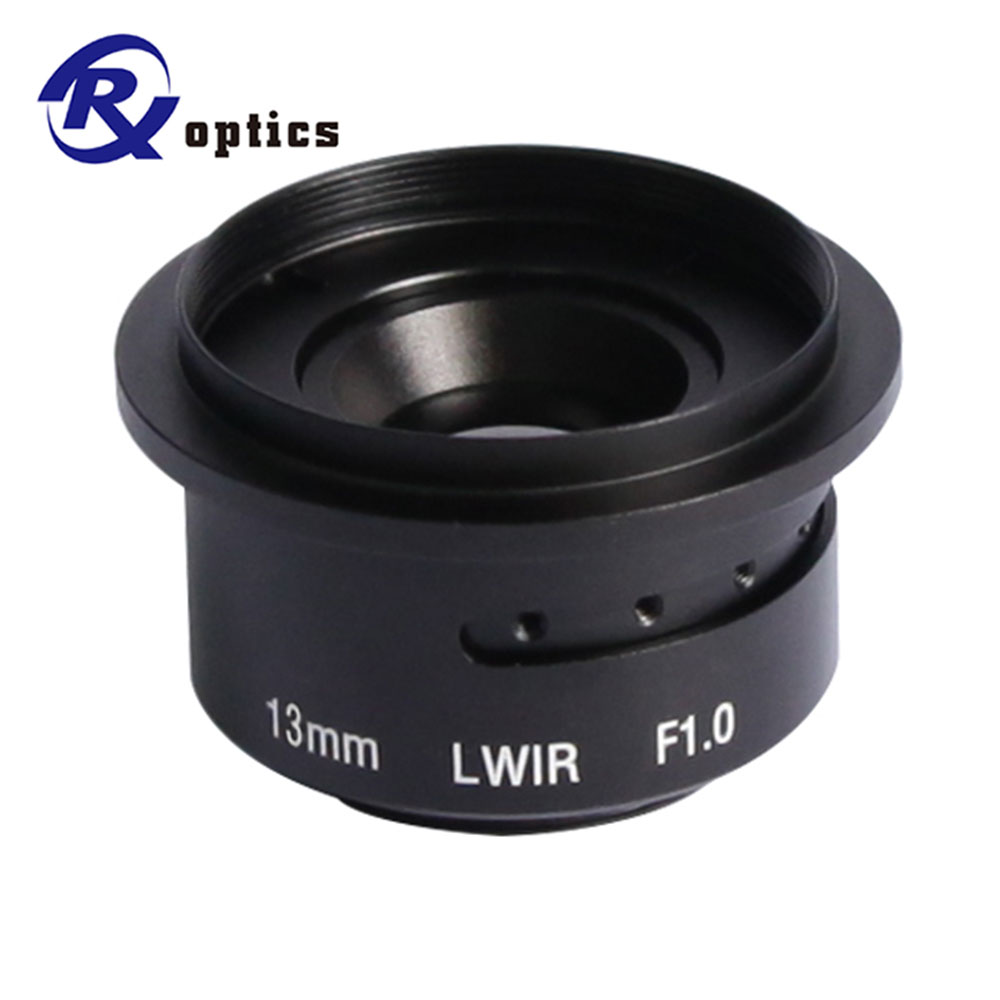
Lwir Lens,Night Vision Camera Lens,Ir Imaging Lenses,Thermal Camera Lwir Lens
Changchun Ruiqi Optoelectronics Co.,Ltd , http://www.ruiqi-optics.com